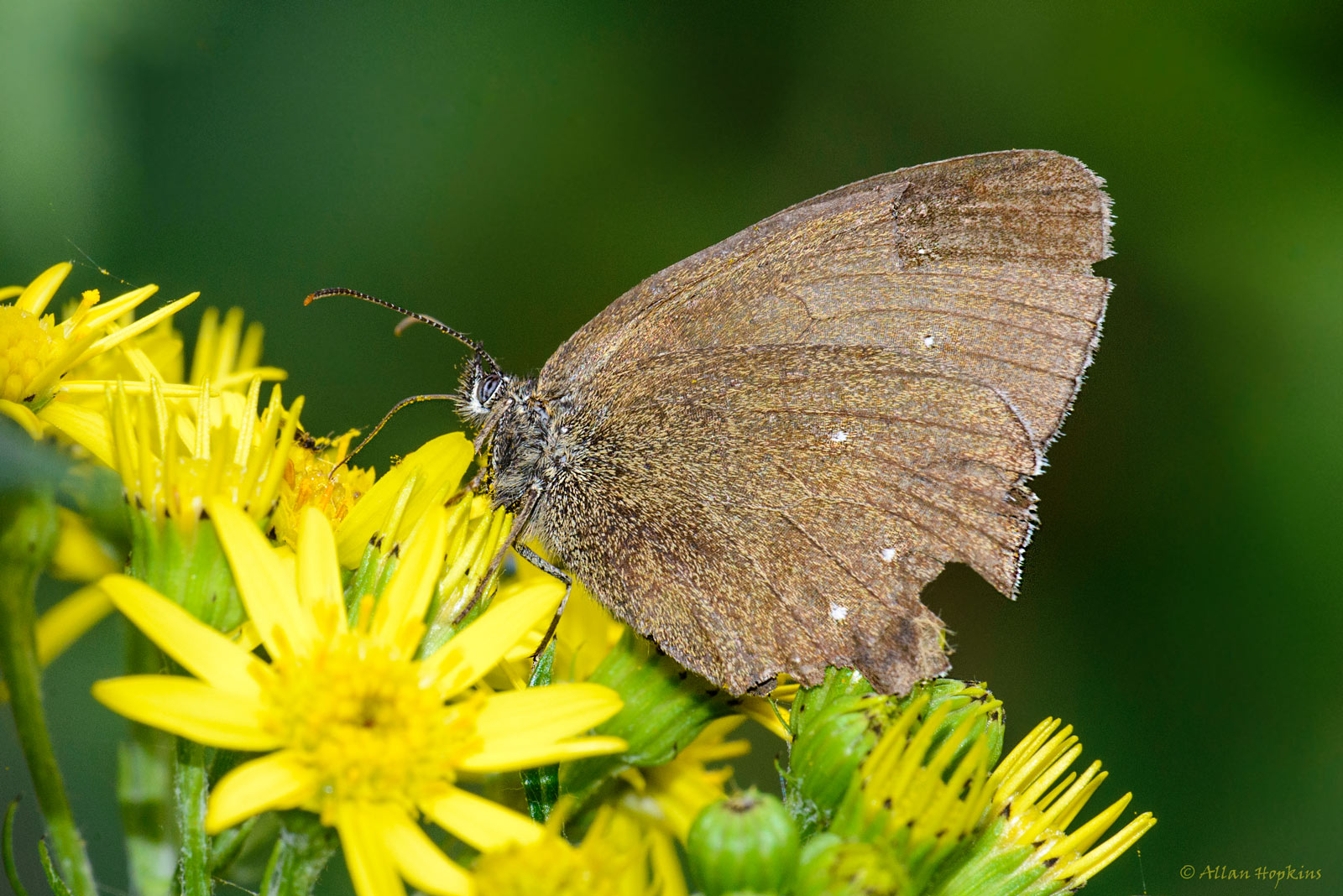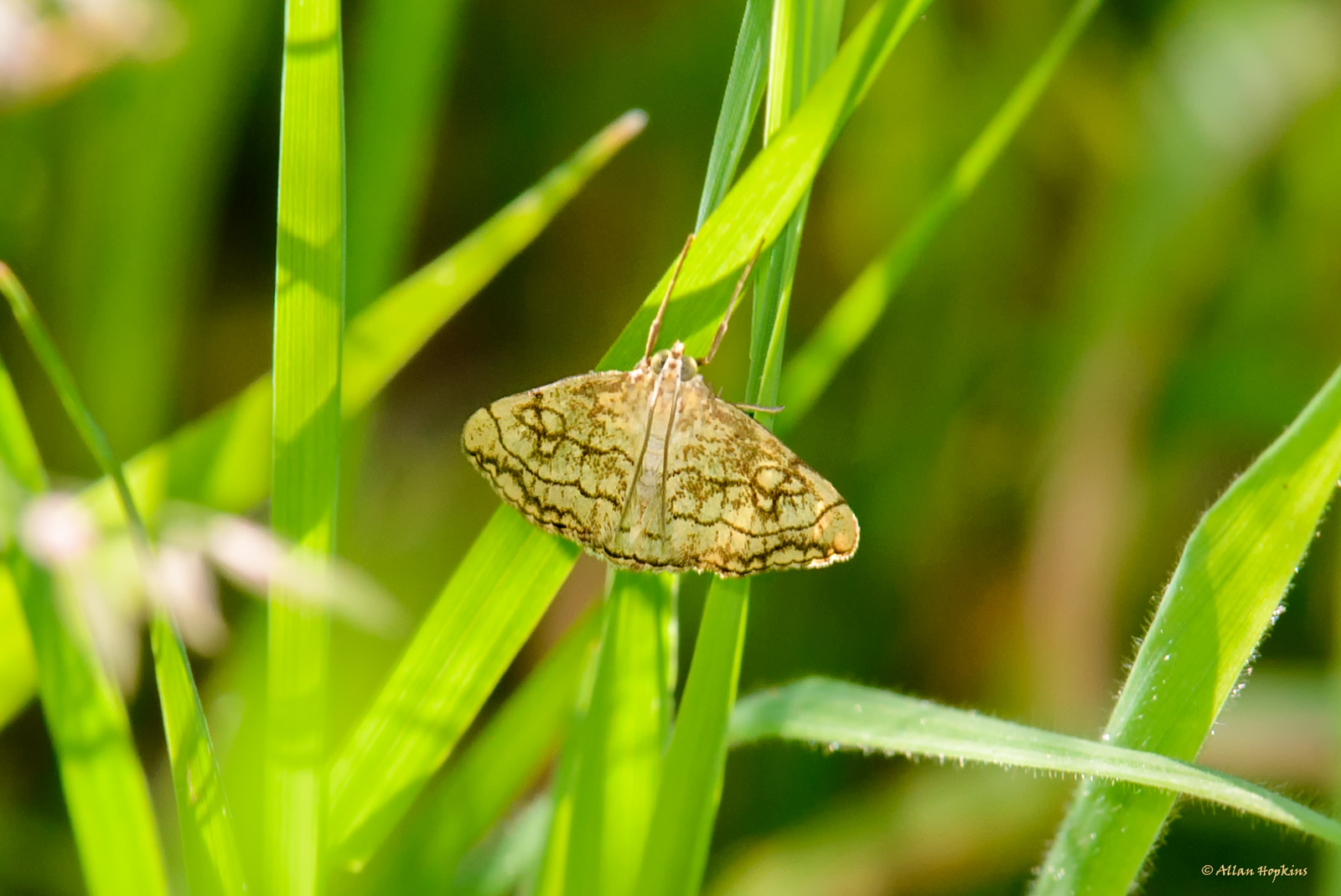Here are a few of my observations from the last couple of weeks.
Aberrant Ringlets
The first example was seen in my Gilwern garden on Friday (22/07/16). I wouldn't normally photograph a butterfly as worn as this, but it attracted my attention because of its very unusual wing markings, which are reduced to small white points with no encircling gold rings.
 |
| Ringlet (Aphantopus hyperantus ab. arete (Muller 1764)) |
Last Tuesday (19/07/16) at Kenfig, a spotted a second aberrant individual with some pear-shaped enlarged spots on its underwing, bearing some resemblance to ab. lanceolata.
 |
| Ringlet (Aphantopus hyperantus ab. nov) |
Yesterday afternoon (Monday, 25/07/16), I spent a couple of hours on the footpaths near the National Trust car park on the lookout for bugs. I was particularly seeking purple hairstreak which I'd photographed here in August, 2013. There were plenty of small skipper, meadow brown, gatekeeper, small white, plus a few red admiral and comma, but alas no purple hairstreak. There were a few white-legged damselflies, banded demoiselles and a conopid fly (Physocephala rufipes) to keep me happy. In the small field next to the carpark, managed to capture this moth, giving me an opportunity to use my brand new copy of the micro-moth field guide.
 |
| Chequered Pearl moth (Evergestis pallidata (Hufnagel, 1767)) |
Rogiet Poor Lands
Earlier this month I made my first visit to the excellent RPL's and Lower Minnets Field. Lots of meadow browns, gatekeepers, ringlets, small skippers, six-spot burnet moths, nettle taps, plus some new insects, including what I think is a Small Fan-footed Wave (Idaea biselata), lots of Tansy Leaf Beetle (Galeruca tanaceti) and Long-winged Cone-head (Conocephalus discolor). Also, after seeing many over the years, this time I had my camera handy:
 |
| Emperor Moth (Saturnia pavonia), late instar larva |
I'm a retired Field Ecology/Biology teacher, still keen to expand my experience and knowledge of wildlife. If you're interested, more of my images can be found in my Flickr photostream: https://www.flickr.com/photos/hoppy1951/
'till the next time
Allan Hopkins
Thanks Allan. There are rather few, scattered records of Evergestis pallidata, so please send this (and the other records) in at the end of the year.
ReplyDeleteThe butterfly aberations are fascinating, though not something I ever get around to recording. They may well make interesting data for a future Gwent Lepidoptera book if/when we feel we have enough data to update Horton.